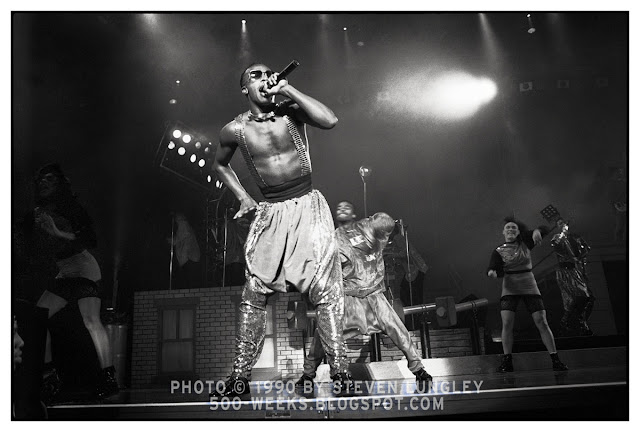Al Pacino works the room
500 Weeks #40
The Toronto International Film Festival features hundreds of films each year, and every one of them is fighting for attention.
 |
| Al Pacino at the 1996 Toronto International Film Festival promoting "Looking For Richard" |
To attract media attention, almost every film sends along at least one representative of the production team – referred to by TIFF as “Guests” - who are made available for media interviews. Some of those guests are happy to be there and eager to promote their latest projects. Other guests, not so much.
Among the attendees are hundreds of members of the media, who are all looking for content that will grab the attention of their audience. The media also want access to the Festival’s guests. The more famous, the better.
I photographed today’s subject - Al Pacino - in 1996 at a press conference for the film “Looking For Richard”. A documentary about Shakespeare, the film was also his directorial debut, and no one is more accommodating to the media than an actor turned director who wants to draw attention to their pet project.
Meeting rooms are configured for a press conference with a line of tables at one end, sometimes placed up on risers. Facing the risers are rows of chairs for the members of the media, and there are risers at the back for the TV camera crews.
A variable detail of this set up is the amount of space between the front row of seats and the tables for the guests. Sometimes the front row seemed further back, or maybe removed. In my observation, if the space separating the media masses asking the questions was larger than usual, it was generally a signal that an elevated level of prickliness could be expected from the star(s) seated at the risers.
With Mr. Pacino, there was very little space separating him from the media hordes. In fact, he was possibly the most accommodating performer I ever encountered at a press conference. The front row seemed even closer to the tables than usual, and Mr. Pacino did not seem to mind a little chaos while interacting with the crowd.
 |
| Mr. Pacino making his appearance. Check out his pocket, he carries his own pens and markers. |
As the conference opens, the guests come in from a side door and head to their seats. The photographers rush to the front and try to get photos before the guests sit down. Names are called, shutters are clicked, flashes are fired and after a minute or so, the guests sit down. The photographers retreat to their seats or simply crouch down to be out of the view of the TV cameras. I had arrived early and snagged a front row seat.
Once the room is back in some form of order, the writers start asking questions. The cameras kept clicking and the flashes kept getting fired throughout the conference. Mr. Pacino just kept talking and joking.
 |
| Working the crowd, signing all the autographs requested. |
At the end of the conference, a scene similar to the opening happens. The folks with cameras all crowd in at the front, tying for another close photo opp. Plus, many of the attendees start handing over items to be autographed. As this crush was taking place, I noticed that another photographer worked his way, not just to the end of the table where Mr. Pacino was seated, he had actually shimmied all the way around the table to the other side. He then moved in behind Mr. Pacino and was taking photos of the assembled media mob from over his shoulder. He kept creeping closer and ducking lower, eventually shocking Mr. Pacino, once he realized there was a stranger right beside him with a camera at his ear.
 |
| Photographer sneaks in from behind |
 |
| Hello!!! |
All Mr. Pacino did was jump away a bit, and exclaim “Hello!” Then he smiled and waved for the guy’s ultra-wide lens, the photo got taken, and the autographed signing continued.
As I said, very accommodating. No fuss, no demands to toss the intruding photographer out. Nothing. Never one to let a photo op go to waste I guess.
On the “Happy to be here” scale, Mr. Pacino gets a 10 out of 10.
Technical stuff: Nikon FM2 camera with MD12 motor drive using Nikon lenses and Fujifilm 400 ISO Super-G colour negative film. Available light on the main image, Vivitar 285HV flash on the rest.


Comments
Post a Comment